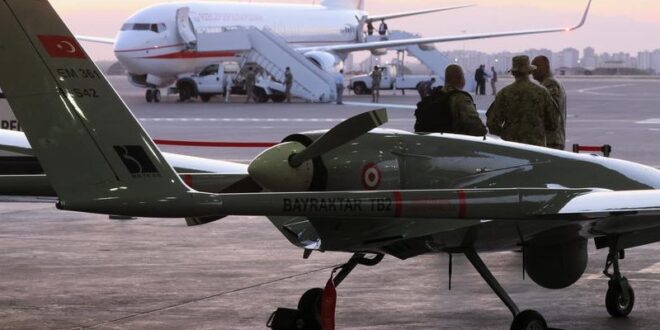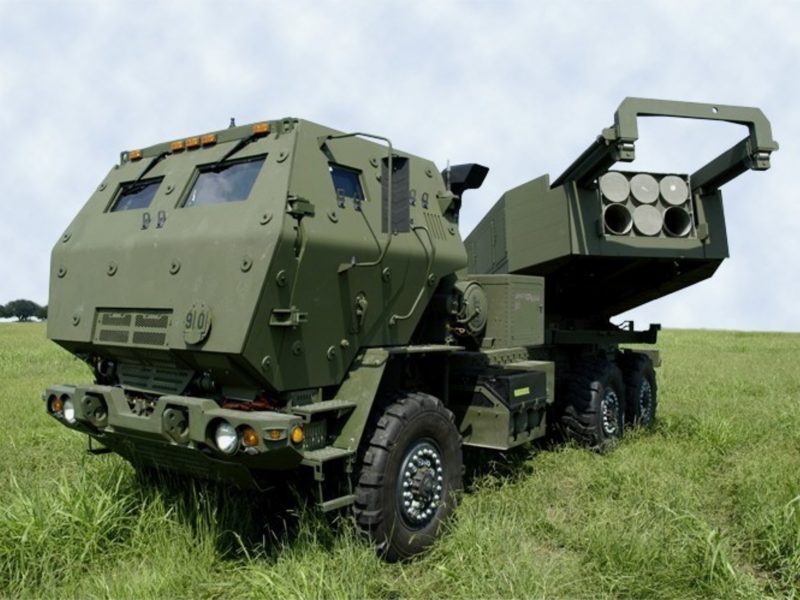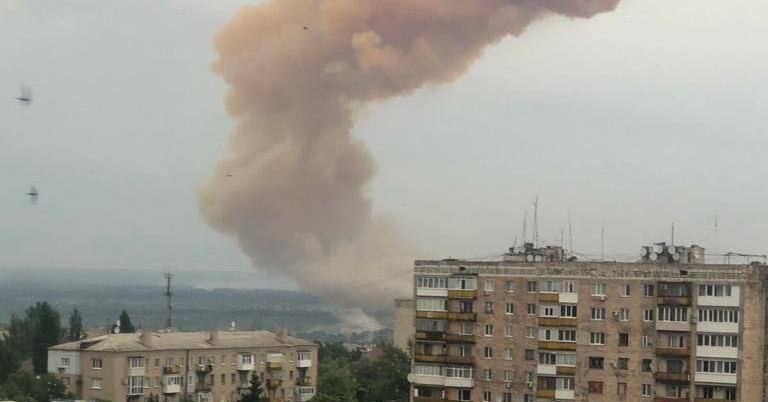The Biden administration plans to sell Ukraine four MQ-1C Gray Eagle drones that can be armed with Hellfire missiles for battlefield use against Russia, three people familiar with the situation said.
The sale of the General Atomics-made drones could still be blocked by Congress, the sources said, adding that there is also a risk of a last minute policy reversal that could scuttle the plan, which has been under review at the Pentagon for several weeks.
Ukraine has been using several types of smaller shorter range unmanned aerial systems against Russian forces that invaded the country in late February. They include the AeroVironment RQ-20 Puma AE, and the Turkish Bayraktar-TB2.
But the Gray Eagle represents a leap in technology because it can fly up to 30 or more hours depending on its mission and can gather huge amounts of data for intelligence purposes. Gray Eagles, the Army’s version of the more widely known Predator drone, can also carry up to eight powerful Hellfire missiles.
The sale is significant because it puts an advanced reusable US system capable of multiple deep strikes on the battlefield against Russia for the first time.
The administration of President Joe Biden intends to notify Congress of the potential sale to Ukraine in the coming days with a public announcement expected after that, a US official said.
A White House spokesperson referred inquiries to the Pentagon and a Pentagon spokesperson said there was “nothing to announce.”
Money from the recently passed $40 billion Ukraine Security Assistance Initiative has been set aside to fund both the possible sale and the training needed for the drones, the US official and one of the people familiar said.
“Generally the MQ-1C is a much larger aircraft with a max take-off weight around three times that of the Bayraktar-TB2, with commensurate advantages in payload capacity, range, and endurance,” said drone expert Dan Gettinger with the Vertical Flight Society.
The MQ-1C is also compatible with a greater variety of munitions than the Bayraktar-TB2. The Ukrainian Bayraktars are equipped with 22 kg Turkish-made MAM-L missiles, around half the weight of a Hellfire.
Training on the UAV system made by General Atomics usually takes months, Gettinger said, but a notional plan to train experienced Ukrainian maintainers and operators in a handful of weeks has been proposed in recent weeks, the sources said.
Arming the drones with Hellfire missiles will be done via a future Presidential Drawdown Authority once training on the drones has been completed, the US official and one of the sources said.
Up until an announcement on Wednesday that Ukraine would get four HIMARS rocket systems, the Pentagon has stressed that smaller systems such as Javelin anti-tank systems and Stinger anti-aircraft missiles, which allies are shipping to Ukraine via truck near-daily, are most useful.
Raytheon Technologies and Lockheed Martin Corp jointly produce Javelins, while Raytheon makes Stingers.
Russian forces were attempting to consolidate their hold on Ukraine’s industrial city of Severodonetsk on Thursday, edging closer to claiming a big prize in their offensive in the eastern Donbas region.
After days of heavy fighting around Severodonetsk, much of which has been laid to waste by Russian bombardments, Russian troops were inching forward through the city streets. Ukraine says about 70% of the city is under Russian control.
“The enemy has entered the centre of Severodonetsk and is trying to take up positions,” Ukrainian military spokesman Oleksandr Motuzyanyk said at a briefing.
If Russia captures the city and its smaller twin Lysychansk on the west bank of the Siverskyi Donets river, it would hold all of Luhansk, one of two provinces in the Donbas that Moscow claims on behalf of separatists.
Capturing all of Luhansk would fulfil one of Russian President Vladimir Putin’s main aims and solidify a shift in battlefield momentum after his forces were pushed back from the capital Kyiv and from northern Ukraine.
Bomb shelters
In the bombed-out town of Rubizhne, a short distance northwest of Sievierodonetsk, residents filled up water jugs at an aid station.
Destroyed military vehicles littered streets lined with heavily damaged buildings. Children sat silently in a bomb shelter. Outside, black smoke rose above a red-domed Orthodox church.
Luhansk’s regional governor, Serhiy Gaidai, told Reuters that civilians were sheltering from Russian attacks under a Sievierodonetsk chemical plant that he said was hit by an air strike on Tuesday, releasing a large pink cloud.
“There are civilians there in bomb shelters, there are quite a few of them left, most of whom did not wish to leave,” Gaidai said. The account could not be independently confirmed.
About 15,000 people remained in the city, Gaidai said.
Gaidai has warned that Ukrainian troops in Severodonetsk could be forced to retreat to Lysychansk, which he said was easier to defend from its vantage on a hill.
Putin sent his troops over the border on what he calls a special military operation on 24 February to disarm and “denazify” Ukraine. Ukraine and its allies call this a baseless pretext for a war of aggression and the West has imposed stringent sanctions on Russia in a bid to strangle its economy.
Thousands of people have been killed in Ukraine and millions more displaced since the invasion began.
Amid worries about the global ramifications of the war, Ukraine’s grain traders’ union said this year’s wheat harvest was likely to drop to 19.2 million tonnes from a record 33 million in 2021.
Biden is due to meet NATO Secretary-General Jens Stoltenberg at the White House on Thursday. Stoltenberg told reporters he would convene a meeting in Brussels in coming days with officials from Sweden, Finland and Turkey to discuss Turkey’s opposition to Sweden and Finland joining NATO.
(Edited by Georgi Gotev)
 Unmanned Aerial Vehicle The latest drone news
Unmanned Aerial Vehicle The latest drone news






